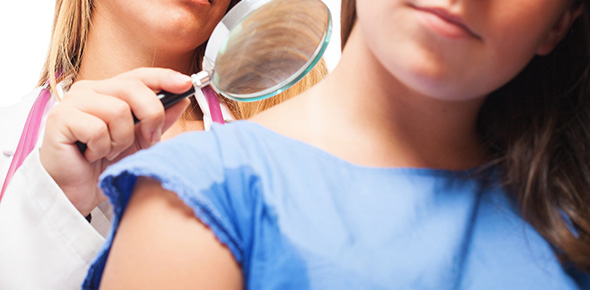Related Flashcards
Related Topics
Cards In This Set
| Front | Back |
|
A closed abnormally developed sac that contains fluid, pus, semi fluid, or morbid matter. can be above or below the skin
|
Cyst
|
|
A skin sore or abrasion produced by scratching or scraping
|
Excoriation
|
|
Whitehead
|
Closed comedo
|
|
Chronic condition appearing primarily on the cheeks and the nose. characterized by redness/flushing, dilation of the surface blood vessels and the formation of papules and pustules
|
Rosacea
|
|
Can be damaging but also contribute to the body's synthesis of Vitamin D
|
UVB
|
|
American Cancer Society's ABCDEs: What is C?
A-Asymmetry B-Border C-___________ D-Diameter E-Evolving |
Color
|
|
Avoid exposing children under __________ to the sun
|
6 months
|
|
Skin disorder caused by light abnormal patches. caused by a burn or congenital disease that destroys the pigment producing cells
|
Leukoderma
|
|
Sebacious cyst which is a subcutanious tumor of the sebacious gland
|
Steatoma
|
|
Excessive sweating, caused by heat or general body weakness. medical treatment is required
|
Hyperhidrosis
|
|
Painful itching disease presenting many forms of dry or moist lesions. All forms should be referred to a physician and are not contagious
|
Eczema
|
|
Absence of melanin pigment of the body, including the skin, hair, and eyes. skin will not tan and eyes are pink. skin is very sensitive to light and ages early
|
Albinism
|
|
Thickened patches of epidermis commonly known as callus or corn.
|
Keratoma
|
|
UVA rays weaken the collagen and elastin fibers of the skin, causing wrinkling and ______________
|
Sagging
|
|
Fever blister or cold sore; recurring viral infection. appears on the lips, nostrils, or other parts of the face that can last up to 3 weeks. very contagious
|
Herpes simplex
|







